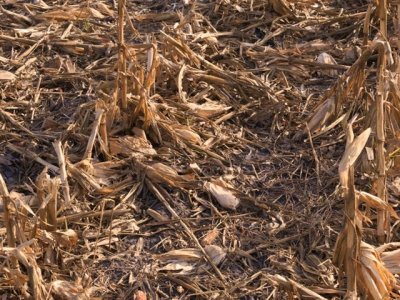US researchers looking to boost the nutrient value of corn stover

Researchers at North Carolina Agricultural &Technical (A&T) State University are exploring how the use of a mushroom-based feed supplement might improve how US farmers feed their cattle.
The three-year research project received US$500K in funding through the US Department of Agriculture’s (USDA) National Institute of Food and Agriculture (NIFA) grant program.
In the early stages of US beef cattle production, cows graze on pastures and rangelands, before finishing on feedlots where they are given grain. Production costs increase during the winter months when pastures are less productive. As a result, cattle farmers use supplemental feeding of previously-harvested and stored forages and other agro-industrial by-products such as corn stover.
While stover is plentiful, it is not ideal as a livestock feed, even after it is processed into bite-sized pellets as it contains a lot of tough plant fiber, called lignin. The team at North Carolina A&T want to find an affordable way to fortify corn stover and make it easier for cattle to consume.
They believe that cultivating mushrooms on corn stover will break down the lignin in that crop residue, making it easier to digest and they hope the mushrooms will simultaneously release nutrients and bioactive compounds into the stover to make it more nutritious. If successful, the initiative could reduce the financial challenges for farmers by enabling them to utilize cheap and plentiful corn stover for winter feeding of cows.
The project is focused on supporting small and medium-sized cattle producers, said Uchenna Anele, assistant professor in ruminant nutrition, North Carolina A&T.
“We generate a lot of stover because corn is the number one cereal grain in the US. [We are looking to see if] there is a way that we could use it to produce mushrooms, ... and [in doing so] try to improve [the residue as a feed] and add value.”
The research developed out of conversations with a mycologist and a shared interest in using mushrooms in this way, he said.
The research team includes an economist who will be assessing all the data the team collates, said Anele.
“Because we’re trying to do applied research, and we’ll be working with farmers, we felt it was important to have an economist to capture everything [to ensure the project] makes sense in terms of the return to the farmer."
The research team is also comprised of an animal scientist, a mushroom scientist, a biotechnologist, and a group of farmers in North Carolina.
Feeding trial
The farmers in the trial will feed the modified corn stover to yearling beef cows, said Anele.
A mushroom fruiting house and both corn stover and inoculated corn stover-based 'fruiting bags', which will be used to help grow the mushrooms, are set to be provided to the producers taking part, he said. Efforts are underway to have the fruiting houses delivered so producers will have the chance to get used to mushroom production and start developing a market for the fungi prior to starting the feeding trial.
The corn stover and inoculated stover are set to come from the same source to reduce the potential for variation, he said. Livestock would have access to the partially degraded stover by the end of the year or the start of next year.
“They’ll produce the mushroom cell, and they’ll use the reside to feed the livestock,” Anele said. “We’ll have three different treatments, and we want to see, in addition to breaking down the lignin and releasing some of the [nutrients] that are bound by the lignin … a slight increase in crude protein content.”
“We are hypothesizing that we will have increased bioactive chemicals that will help to improve the health parameters of the animals,” he added.
The stover is intended as a supplement to a pasture diet – cattle on the farms will be fed and tracked for six months.
“We’ll take blood and we’re going to look at some cytokines from those that are not receiving the corn stover and those that are,” Anele said. “And we’ll be looking doing some metabolomics work, and also looking at cytokine expression.”
The intention, at this time, is to repeat the feeding trial for three cycles, he added.
Có thể bạn quan tâm
Phần mềm

Phối trộn thức ăn chăn nuôi

Pha dung dịch thủy canh

Định mức cho tôm ăn

Phối trộn phân bón NPK

Xác định tỷ lệ tôm sống

Chuyển đổi đơn vị phân bón

Xác định công suất sục khí

Chuyển đổi đơn vị tôm

Tính diện tích nhà kính

Tính thể tích ao hồ



 Research center focuses on improving cattle forage
Research center focuses on improving cattle forage  Scientists investigate anticoccidial drug efficacy
Scientists investigate anticoccidial drug efficacy